Why Did Hardware Market Went Mad? We Explain the Full Picture
Although the prices of computer components, especially graphics cards, are slowly returning to a relatively stable level, we can be sure of one thing – even after the crypto mining craze, we won't be returning to the old normal.
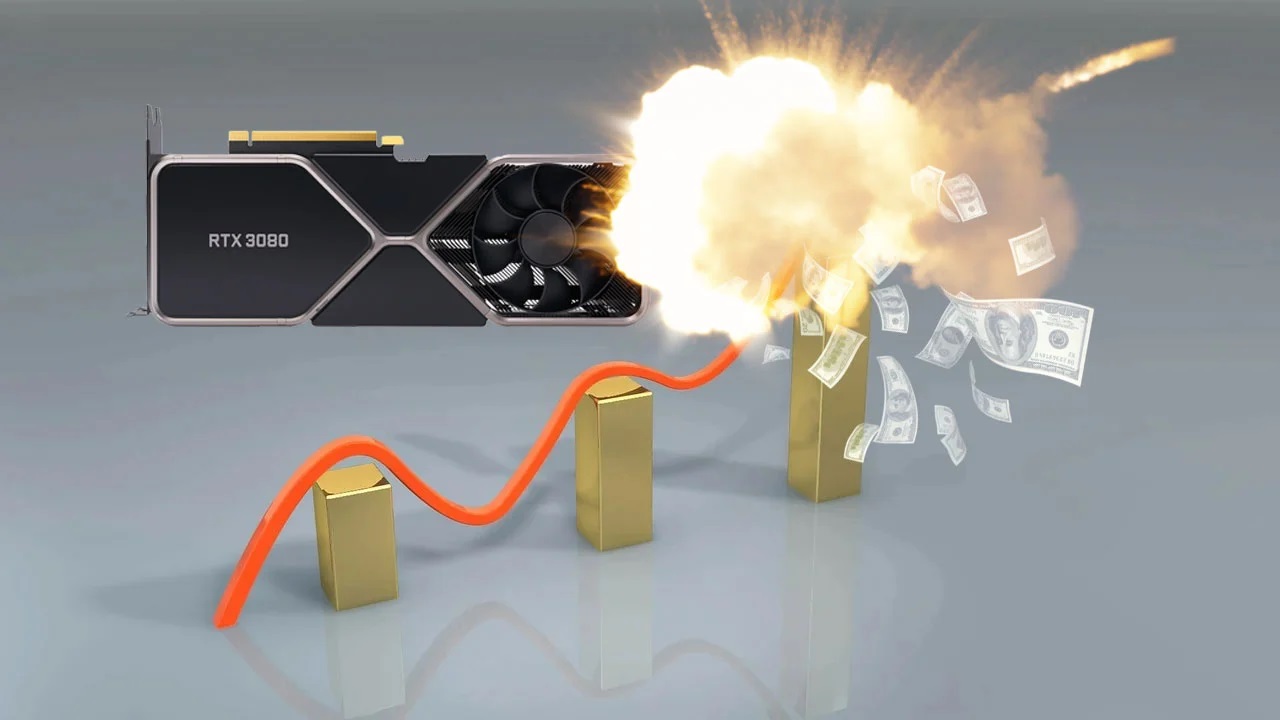
The end of 2020 was a really hot time for gamers. The launch of the new generation of consoles and graphics cards electrified the technology enthusiasts from around the world. Like many of you, I was hoping that the second generation of RTXs from Nvidia and the 6000-series Radeons would give ray tracing mass appeal. I also planned replacing my venerable GPU with something more powerful... at a reasonable price. Unfortunately, to date, prices of GPUs are hugely inflated, and most of the discounted items fall prey to bot-using scalpers. There are several factors that warrant hope for a brighter future: the ban of cryptocurrency mining in China, the introduction of the RTX 3000's Low Hash Rate (LHR) version, and declining blockchain exchanges. One thing I'm almost sure of, though – the "golden days" of cheap gaming hardware are long gone and will not return.
The heyday
Let's go back to late 2014 and early 2015, a time when the iconic GTX 970 was the most popular graphics processor in gaming rigs. With the price tag of about $330, it offered performance comparable to the much more expensive GTX 780. What's more, it still provides quite a comfortable experience today, provided you don’t mind setting quality to medium. In terms of price-to-performance ratio, the GTX 970 was a very cost-effective choice. Even though there was a small scandal related to the used memory, many of you probably remember it fondly, and some of you may even still have it in your computers. It is worth mentioning at this point that, with each subsequent release, NVIDIA was redefining the midrange. This meant that the GTX 1060 – rather than 1070 – was the successor to GTX 970 in terms of price range. For some time now, Nvidia has been successively increasing the MSRP of their products, and today, 350 bucks would get you nowhere beyond the low to mid performance range.
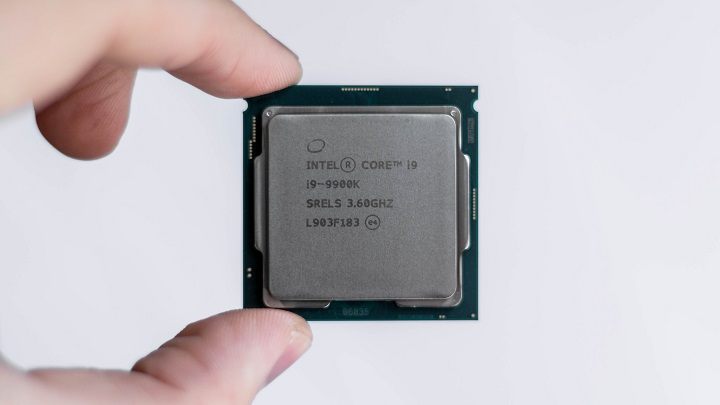
2015 was also an interesting year for CPUs. Intel prepared two major launches: the Broadwell line, already forgotten by most gamers today (Core i5-5675C and Core i7-5775C), and the still quite popular Skylake series (such as i5-6600K among others). The former was interesting in that, after overclocking and using a powerful enough graphics card, it outperformed not only the newer 6000 series chips, but sometimes even the seventh generation, i.e. the Kaby Lake (vide i7-7600K).
Such good results were possible thanks to significant changes in the architecture: using the faster eDRAM and switching to 14 nm lithography, which we also know from newer models. Nowadays, this technology process is often the subject of jokes, as even the latest incarnation of the Core series uses the same lithography. Despite Broadwell being the full-fledged successor to Haswell, only the two previously mentioned CPUs were ultimately unveiled. Interestingly, they only worked with H97/Z97-chipset motherboards, which meant that owners of the H81/H87/Z87 chipsets were unable to install newer units despite the physical compatibility of the LGA 1150 socket.
It's an open secret that the release of Broadwelli was a kind of fulfillment of Intel's promise of having two generations of processors run on the same chipset. It's entirely possible that the success of the 5th generation surprised even Intel, as they launched CPUs so powerful that it was hard to top them. Of course, the company did not like it, as the Skylake family was already on the horizon, and this required a new LGA1151 platform and DDR4 memory. Intel wanted to push motherboard and memory manufacturers to shift to the technology of the future. So, if you are the lucky owner of Core i7- 5775C, you could say that you have done the deal of a lifetime.
AMD, after releasing the moderately successful Bulldozers (FX 8350) decided to invest heavily in their R&D department. AMD survived the hard times in large part thanks to eighth-generation consoles, since both the PS4 and Xbox One were powered by octa-core Jaguars. After several years of stagnation and dominance by Intel, in mid-2017, we received the first iteration of chips based on the Zen architecture (such as the massively popular Ryzen 5 1600). AMD was offering 6 cores and 12 threads at a price, for which the best Intel you could get offered just 4 cores and 4 threads. For the average computer user, this meant moving to much more powerful hardware without greater expense.
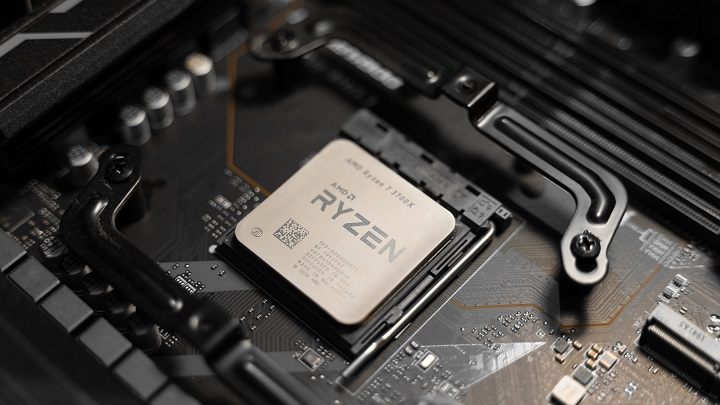
This forced the competition to accelerate the release of the Coffee Lake family processors (i5-8600). Things got so bad that we saw as many as two generations of Intel chips released in 2017 – after all, Kaby Lake debuted in January (i5-7600K). At the time, it was common knowledge that Ryzens were great for semi-professional, multi-threaded applications, while the Intel Core series was better suited for gaming. However, two years later, with the release of chips based on the Zen 2 architecture (Ryzen 5 3600), the differences are almost negligible, and one may venture to say that AMD products currently outclass Intel. And that's good, because the increasing monopolization of the market by Intel meant that since 2011 (when Core 2000 was launched), the differences between subsequent generations were largely cosmetic.
Problems at the mine
In addition to the debut of the Zen architecture, 2017 saw the first noticeable impact of cryptocurrency miners on the consumer electronics market. GPUs prices have skyrocketed to levels previously unknown to anyone who hadn't had nightmares about the GPU market, and the value of cryptocurrencies – primarily bitcoin and Ethereum – increased 20-fold and 100-fold respectively in a single year. One BTC was worth approximately $20,000 in December 2017, while ETH broke the $1,000 ceiling. This bull market did not last, however, as the bubble burst in early 2018, when rates began to plummet. Auction sites were overflowing with aftermarket components, and prices in stores resettled. Some of the more vigilant crypto-investors anticipated this situation and managed to sell their equipment at a profit, only to buy new gear at a much lower price a short time later. It is estimated that the crypto miners bought more than 3 million GPUs in 2017.
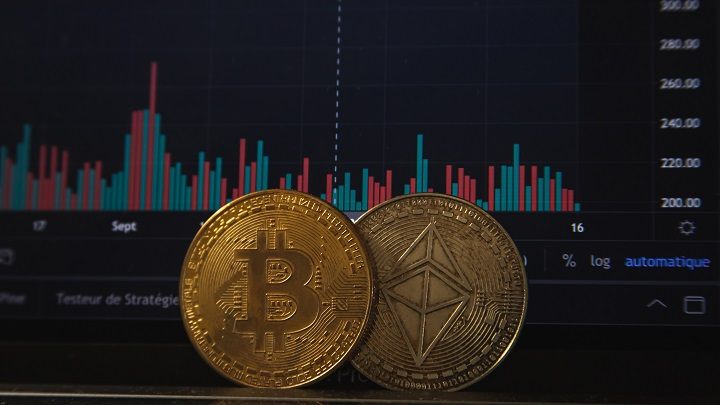
Interestingly, Nvidia believed in a sustained cryptocurrency boom so strongly that it led to an overproduction of Pascals (the GTX 1000 series). This delayed the release of the next generation, which was relatively expensive at launch. The theory was that this move was supposed to allow clearing the warehouses of the older, overproduced GPUs. Shareholders didn't like it, as the company's market value sank 53%, and the Schall law firm (based in LA) prepared a class action lawsuit against Nvidia.
Explosion
The heydays described above, however, were finally over, and this is due to several factors. While the electronic components market has been severely impacted by the COVID-19 pandemic, the source of the problems can be traced back to 2018, when Donald Trump's administration decided to start a trade war with China. At first, it was about imposing new tariffs and fighting intellectual property infringements; eventually, it came down to accusations of espionage, resulting in sanctions against Huawei.
Factors such as outsourcing and globalization have also played their part. Most new-tech companies only take care of designing the production process, which is then put into motion by contractors – mainly in the factories of Asia, obviously. Raw materials have to be mined, then one factory manufactures semi-finished products, and another completes the finished product; every smallest ingredient of each of these stages has to be shipped around the world – in containers, aboard huge freighters. Any disruption, at any point of the supply line causes serious and long-lasting consequences.
Furthermore, semiconductor manufacturing is a very complex process that requires proper management, supply chains, and professional personnel. Implementing ever smaller manufacturing processes also requires a more sterile environment. Moreover, due to progressive automation of the entire process, even a power outage of a few hours in the plant can increase the price of components by as much as several percent!
Late intervention
The last few years have seen the launch of new generation consoles, graphics cards with ray tracing and, finally, new connectivity standards: the new iterations of Bluetooth, Wi-Fi, and 5G networks. Combine this with the lack of increased plant throughput and the introduction of even newer technologies (5nm lithography or GDDR6X memory), and we wake up one day in a world facing semiconductor shortage. Intel or TSMC (the world's largest silicon wafer manufacturer) are predicting shortages to continue until 2023.
Are there steps taken to counter that? Joe Biden, after a meeting with industry leaders, announced a $52 billion bailout of the technology sector to revive domestic manufacturing, but it remains to be seen whether this solves the matter. Additionally, TSMC begun the construction of a new facility in Arizona, and the estimated cost of this investment is expected to be $12 billion. Intel also made a similar move, committing $20 billion to open two new factories. In addition, the center in New Mexico will be modernized, where Intel will spend another 3.5 billion dollars on modernization.

The European Union has also joined the fight against the growing crisis. MEPs plan to expand semiconductor manufacturing. Right now, EU27 owns 10 percent of the market, but that number is expected to at least double by 2030. The project involves building factories capable of producing 5nm and smaller chips. Work in Europe, however, is far less advanced than in the United States.
Minor improvement
When Nvidia unveiled the next generation of RTX in early September 2020, no one expected a 40% performance increase over 2080 Ti at a much lower MSRP. The Internet was flooded with stories of users of those GPUs, who began selling their cards en masse, hoping to upgrade to the next generation at little cost. The best bargain you could get was RTX 2080 Ti for about $500, or the older 1080 Ti for some $350. After Nvidia's declarations, few people expected that the supply would not meet the demand for new cards. As it turned out later, many enthusiasts were left without GPUs, as buying an RTX 3000 was nearly impossible for many months. Now, the situation is beginning to normalize, but the Ampere family chips are still sold at heavily inflated (relative to suggested) prices. The attitude of AMD, which, unlike Nvidia, guaranteed it was prepared to cover the demand for new GPUs, also didn't help. The promises were quickly verified, with incidents such as delivering exactly 35 RX 6900 XT units to Digitec – the largest electronics distributor in Switzerland.
Fortunately, the German analysts at 3DCenter recently provided gamers with some good news. According to them, the situation is gradually improving and prices have started to drop noticeably. While it's too early to declare that the crisis is over, the past month has seen European GPU prices at their lowest since February 2021. German retailers are asking on average 153% of the MSRP for the new GeForce and Radeon. This is a noticeable improvement, since as recently as May this year, prices at 300% above MSRP for Ampere and RDNA 2 cards were quite popular.
However, the price declines of bitcoin and Ethereum may prove to be just the tip of the iceberg, as Chia, yet another cryptocurrency, made headlines in April. Unlike the solutions previously known, it uses free disk space, rather than the processing power of the CPU, graphics card, or ASIC miner. Chia is based on the Proof of Space & Time mechanism, so it is mainly HDD and SSD capacity that matters. High-capacity drives became more expensive some time ago in China or Japan. The cryptocurrency reached its highest prices around May 2021, and then started to consistently fall. However, more unusual solutions like this are bound to arise in the future.
SSD gamers have noticed that as the prices of these media have dropped (compared to previous years), more and more manufacturers have decided to reduce their quality (or endurance), which is denoted by the TBW (Terabytes Written) value. A well-known company called PNY has reduced this value by as much as 79% compared to earlier models of the same drives!
Cryptocurrency exchanges based on blockchain may also soon encounter some serious turbulence, as the Proof of Work algorithm changes to Proof of Stake for Ethereum. This means that it will drastically reduce not only the GPU power requirement needed to mine cryptocurrency, but also the power consumption of the blockchain (by up to 99.95%). This will have a positive impact on the environment, as cryptocurrency mining already consumes as much energy as a mid-sized, developed country annually. The mining network should switch to the new technology in stages. While the process has been underway for some time, it is lengthy and will be completed within the next few months at earliest. This is probably when we should experience a drop in computer component prices. Experts also predict that Bitcoin will transition to PoS, which could completely turn current market realities upside down.
Empty warehouses
At the end of May 2021, more than 30 semiconductor manufacturers – including UMC, SMIC, and PSMC – raised prices on their products, while TSMC had already done so in January. The value of these increases depends on the type of components. In the case of simple transmission circuits, we talk about a difference of about 10-20%, and memory sticks and related circuits have become 30% more expensive. The main reason for the increases is the disruption of production chains, which has reduced the availability of essential electronic components.
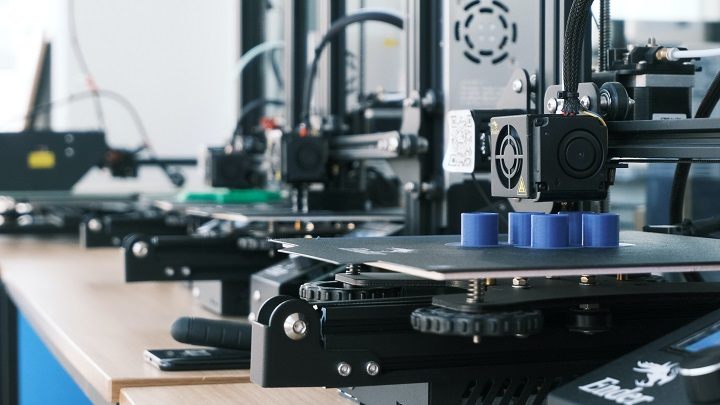
The average waiting time for a semiconductor ordered from a subcontractor increased from 12 to as many as 18 weeks. Global revenues from electronic component sales reached a record $464 billion in 2020. That's a 10% year-to-year increase.
The shipping prices are worth looking into as well. In June this year, media reported that the price of shipping a 40-foot container from Shanghai to Rotterdam had risen to $10,522. This represents an average price increase of as much as 547% over the last five years for the same time of year!
As if all this were not enough, many countries are experiencing rising inflation. It's not uncommon that prices in general have risen by 5% last year in various countries. This means that the purchasing power of currencies is falling, translating into rising prices of consumer goods or transportation.
Let's go back to the main idea of the article, which is that electronics won't be cheap again. This is just a cold assessment of the hardware market, and there are no certainties here. No one knows exactly what will happen in the future. However, there are many indications that two years ago, we went past the Rubicon in terms of hardware prices.
It seems that at this point, the aftermarket may be the only place to go for people willing to upgrade their older rigs. Since new chips are released quite often by Intel and AMD, auction sites are full of interesting CPUs at good prices.
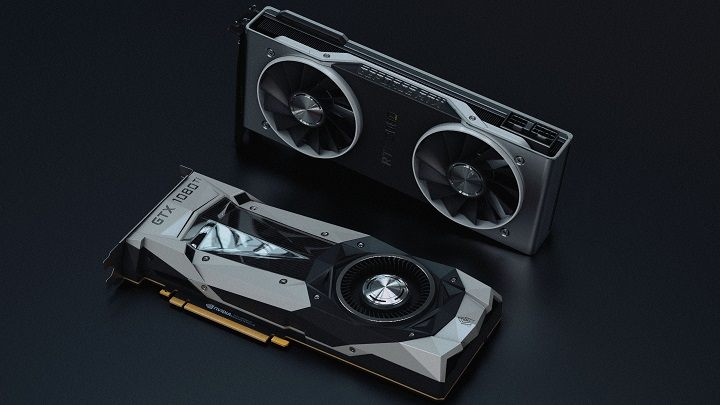
Things are a bit worse when it comes to graphics processors. Buying a used one is not only unprofitable due to inflated prices, but we also run the risk of buying a post-miner, which entails certain risks.
As you can see, there are many factors that determine the price of electronic components, from droughts in Taiwan to container ships getting stuck in the Suez Channel. The coronavirus pandemic accelerated a process that could have happened in the next few years anyway. The blind faith in the robustness of global supply chains produced one of the biggest industry downturns in many years. We can only hope that the big players, CEOs, managers, the suits that make these decisions, will take this lesson seriously, and a similar deadlock will not happen again.